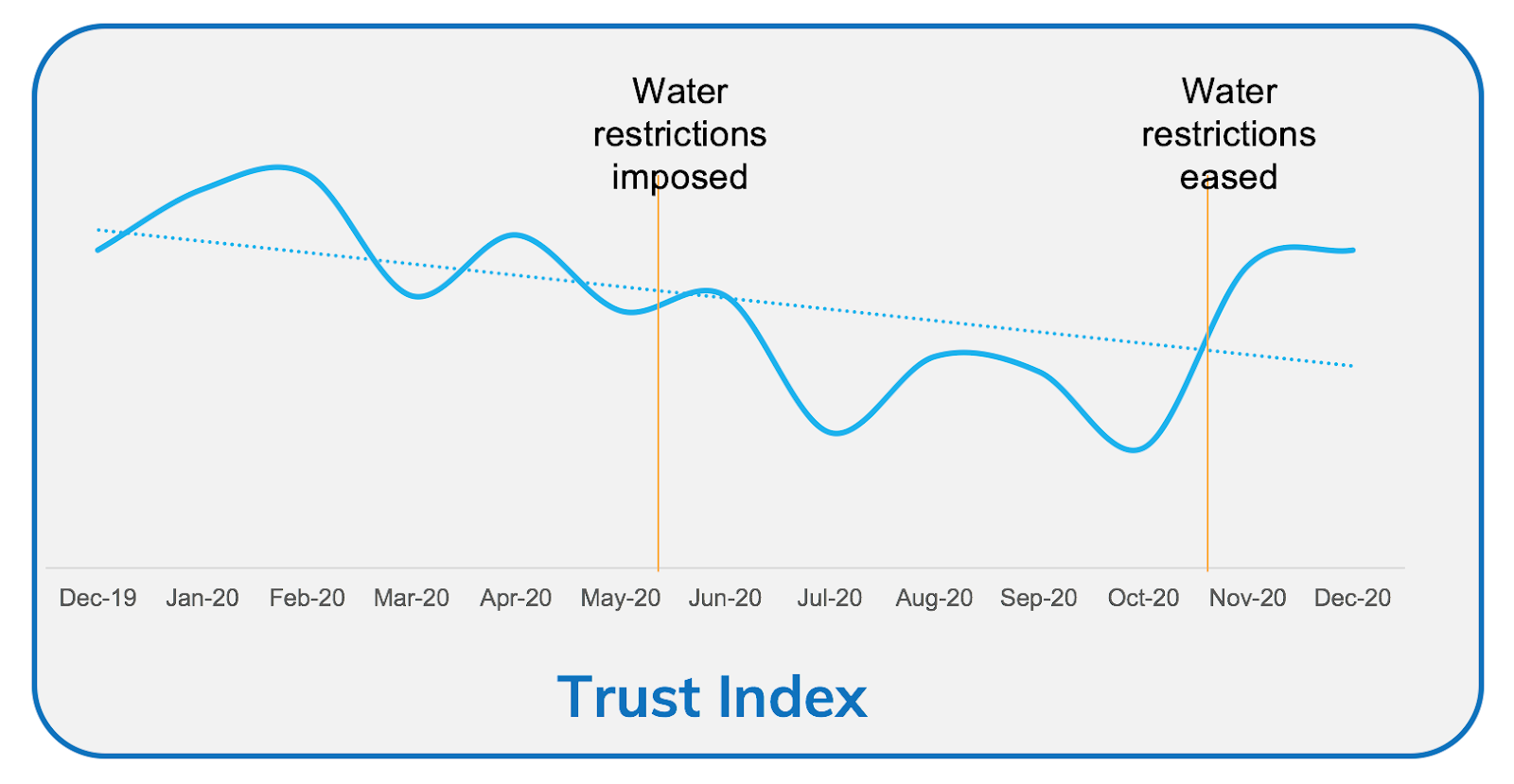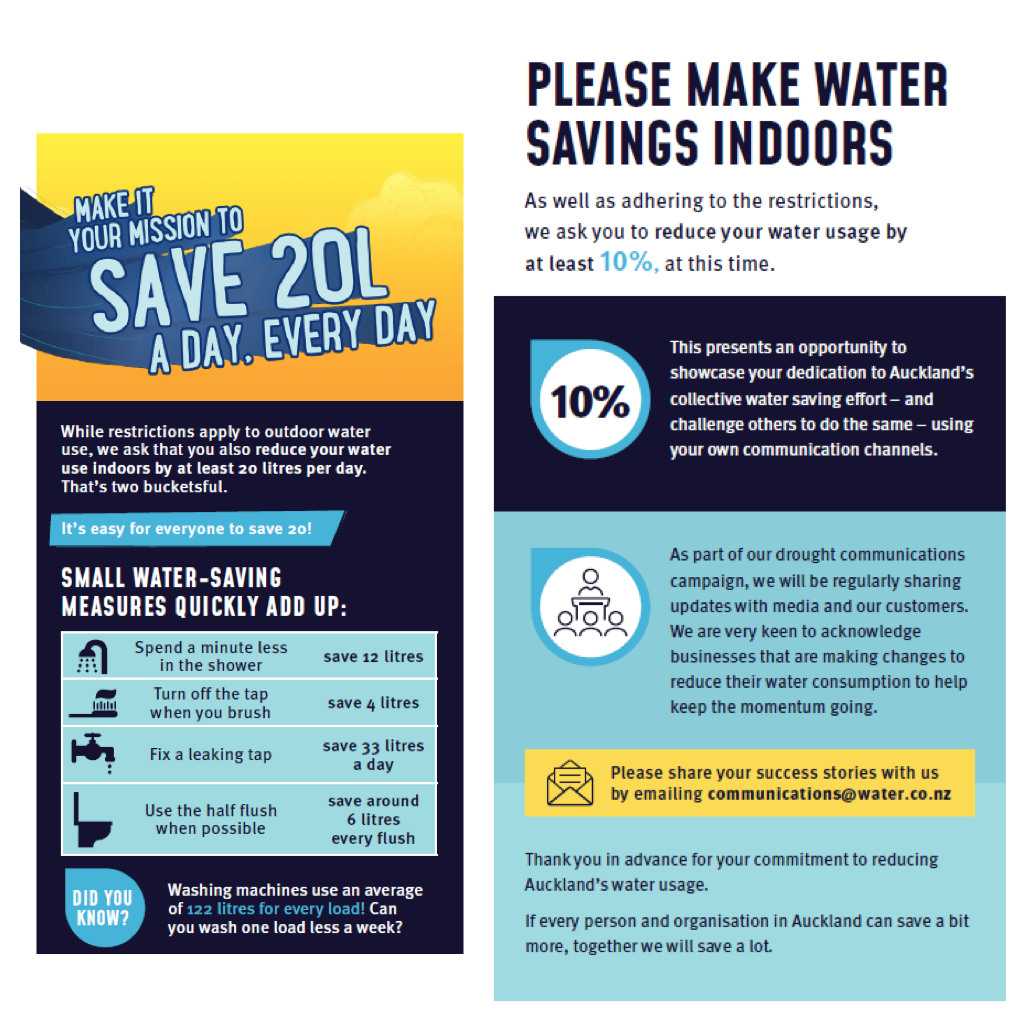

Recently, I hosted a webinar with Priya Thurai, Head of Customer Insights at Watercare NZ. We discussed the integral role customer insights have played in enabling their team to improve how they engage in the community. Today, Watercare continues to use Thematic insights to inform their decision making - driving improvements in their NPS.
You can watch the short webinar here, or read on for my recap of the conversation!
Watercare is the only water utility provider for New Zealand’s largest region - Auckland. With a population of 1.7million people (and growing!) Watercare needs to constantly improve the infrastructure to keep up with demand. Since they’re the only choice of provider, the team at Watercare are mindful of the social license they hold in the community. They want to ensure that New Zealanders trust Watercare and that public perceptions of them remain positive.
It’s important for Watercare to understand how people are feeling about how they're servicing the community. Equally, how to prepare the organisation for the future.
In 2020 Watercare was having a particularly challenging time.
In addition to this, they have the persistent challenge that comes with consumers rarely interacting with their utility provider. People only think of them (typically) when something has gone wrong. So, when they do engage, they’re usually either reporting an issue or querying a bill. All the good work that goes on in the background between those encounters is largely invisible!
This presents a challenge as public perception of the company is really important. Especially when counting on people to follow their guidance during the drought.
Watercare surveys 400 Aucklanders each month. They ask questions relating to people's perception and trust of the company. They could see in 2020 that trust was seriously in decline.

Watercare was being accused of poor management and not having planned sufficiently for the future. The CEO’s salary became frontpage news. And as Aucklanders faced heavier restrictions in the drought, scrutiny increased. It was a difficult time for their field team out working in the community too.
Watercare uses Thematic to understand what’s driving their NPS based on people’s comments. The team also Thematic’s visualisations to communicate the CX insights to wider stakeholders.

By reviewing sub-themes presented in Thematic, Watercare was able to understand what’s driving negative perception. Consumers’ understanding of the work Watercare undertakes is low. There was little transparency over how Watercare was approaching infrastructure challenges. Equally, people did not understand the process and decision-making involved in fixing leaks. This left the organization open to further scrutiny.
When the drought happened, Watercare needed to encourage people to conserve water. Aucklanders were barred from using water outdoors, and many businesses were heavily impacted. Watercare was largely relying on people in the community to report breaches.
But how were people to follow advice and confide in Watercare when the company was perceived as doing little to resolve the issue?
Insights from customer feedback analysis informed Watercare’s strategy. Watercare made the decision to prioritise more frequent and transparent communications. The public needed to know what they were doing to get more water to Aucklanders.
They initiated new mass communications, along with more targeted messages to certain segments. These were all designed to help Watercare rebuild trust.

They were able to use Thematic to help with the media planning to different segments. Through tailored visualisations, the comms teams could see if they were reaching enough customers. Equally, they could see if the messages were resulting in the desired shift in perceptions.
Being able to measure both behavioural and attitude metrics resulted in an additional benefit. Watercare could use this data to gauge how different consumer groups were responding to the water restriction rules. They then tailored different communications to the segments responsible for more restriction breaches.
It turned out that commercial customers struggled most with following the rules. . Businesses like car washing services, plant/nursery stores and outdoor cleaning companies. So, Watercare’s team worked with those customers to help them find alternative ways of meeting their needs. They could teach them about better water conservation practices - and how to collect and distribute rain/untreated water.
They are a lifeline service, operating 24/7, and there were still leaks happening out in the community. But customers didn’t know what Watercare were doing to fix those leaks as fast as they could.
First, the team needed to recognise what was in their control. They couldn't control how the media was reporting about them. However, they could control how their teams out in the field had conversations in the community. So they focused on training/coaching the internal team.
Doing a deep dive on their Thematic themes - it was clear that customers didn’t understand the process involved in fixing a simple leak vs a complex one. So, they needed to be educated about this and what could cause delays. People’s awareness of the need to focus on the larger/complex leaks first, before getting to the small ones, needed to increase too.
Watercare focused on better (and education-focused) communications to resolve this lack of understanding. Part of this work involved the creation of a video to demonstrate how hard the field teams were working. It also covered the "why" behind Watercare's approach to leaks:
The employees (especially those out in the field) at Watercare were having a tough time through all this. So, the communication was not just focused on customers. They needed to celebrate the positive results the team received from all this work too!
Showcasing the improved customer feedback, Watercare's team could see the impact their work was having. Employees managing infrastructure improvements and communication in the community were celebrated. It helped them take more ownership over the work they were doing.
This is a great real world example of how better customer insights can solve challenges facing an entire community!
Watercare are tracking improvements in their NPS. They can see how the investments they’re making in communications are directly impacting this. They know there’s no silver bullet, but they’ve been able to use these insights to tackle a range of CX improvements and, as a result, improve their public perception metrics.

You could say, in terms of Watercare’s favourable image... there’s no longer a drought!
If you're interested in trying Thematic on your own feedback, you can start a free trial.
Join the newsletter to receive the latest updates in your inbox.